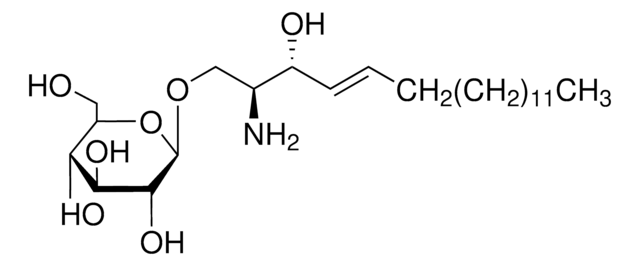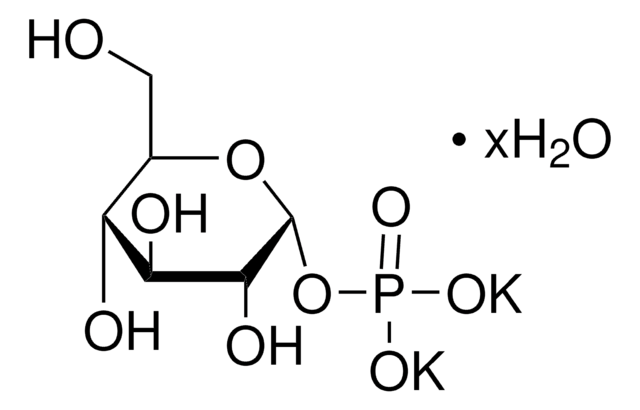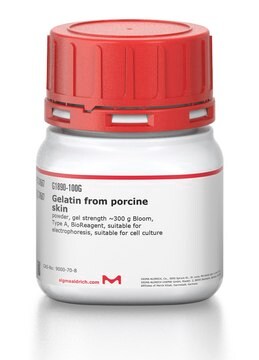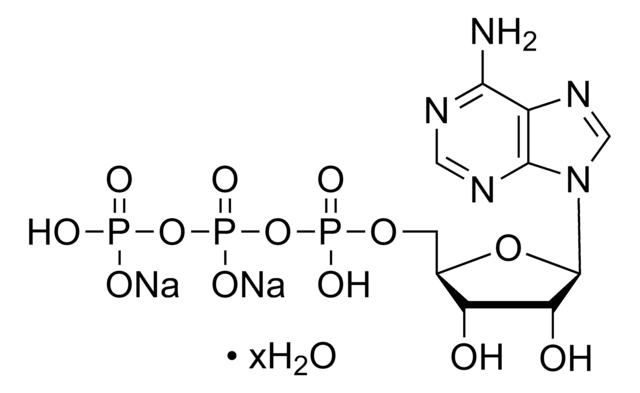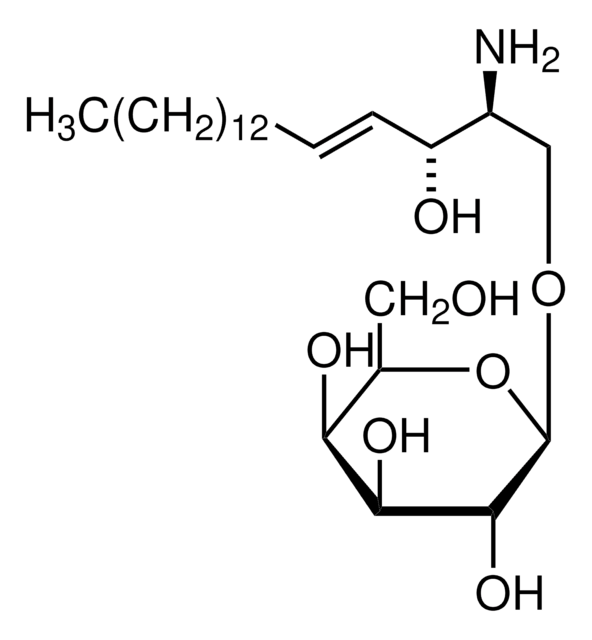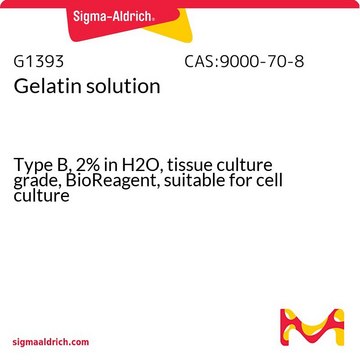G9534
Globotriaosylsphingosine from porcine blood
Synonyme(s) :
α-D-Gal-(1→4)-β-D-Gal-(1→4)-β-D-Glc-1→O-sphingosine
About This Item
Produits recommandés
Type de lipide
sphingolipids
Niveau de qualité
Température de stockage
−20°C
Chaîne SMILES
CCCCCCCCCCCCC\C=C\C(O)C(N)COC1OC(CO)C(OC2OC(CO)C(OC3OC(CO)C(O)C(O)C3O)C(O)C2O)C(O)C1O
InChI
1S/C36H67NO17/c1-2-3-4-5-6-7-8-9-10-11-12-13-14-15-21(41)20(37)19-49-34-30(47)27(44)32(23(17-39)51-34)54-36-31(48)28(45)33(24(18-40)52-36)53-35-29(46)26(43)25(42)22(16-38)50-35/h14-15,20-36,38-48H,2-13,16-19,37H2,1H3/b15-14+
Clé InChI
GRGNVOCPFLXGDQ-CCEZHUSRSA-N
Code de la classe de stockage
11 - Combustible Solids
Classe de danger pour l'eau (WGK)
WGK 3
Point d'éclair (°F)
Not applicable
Point d'éclair (°C)
Not applicable
Équipement de protection individuelle
Eyeshields, Gloves, type N95 (US)
Faites votre choix parmi les versions les plus récentes :
Déjà en possession de ce produit ?
Retrouvez la documentation relative aux produits que vous avez récemment achetés dans la Bibliothèque de documents.
Notre équipe de scientifiques dispose d'une expérience dans tous les secteurs de la recherche, notamment en sciences de la vie, science des matériaux, synthèse chimique, chromatographie, analyse et dans de nombreux autres domaines..
Contacter notre Service technique